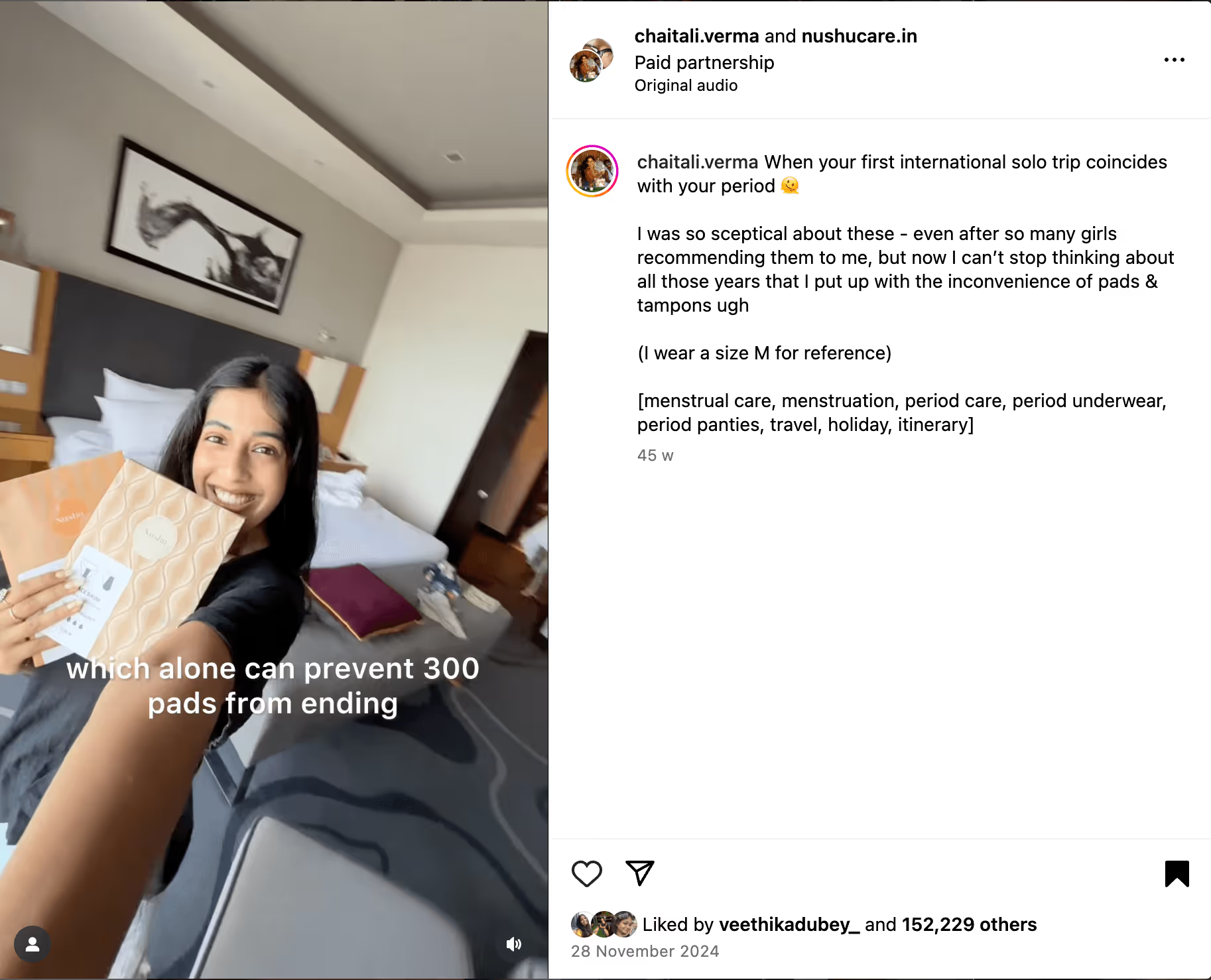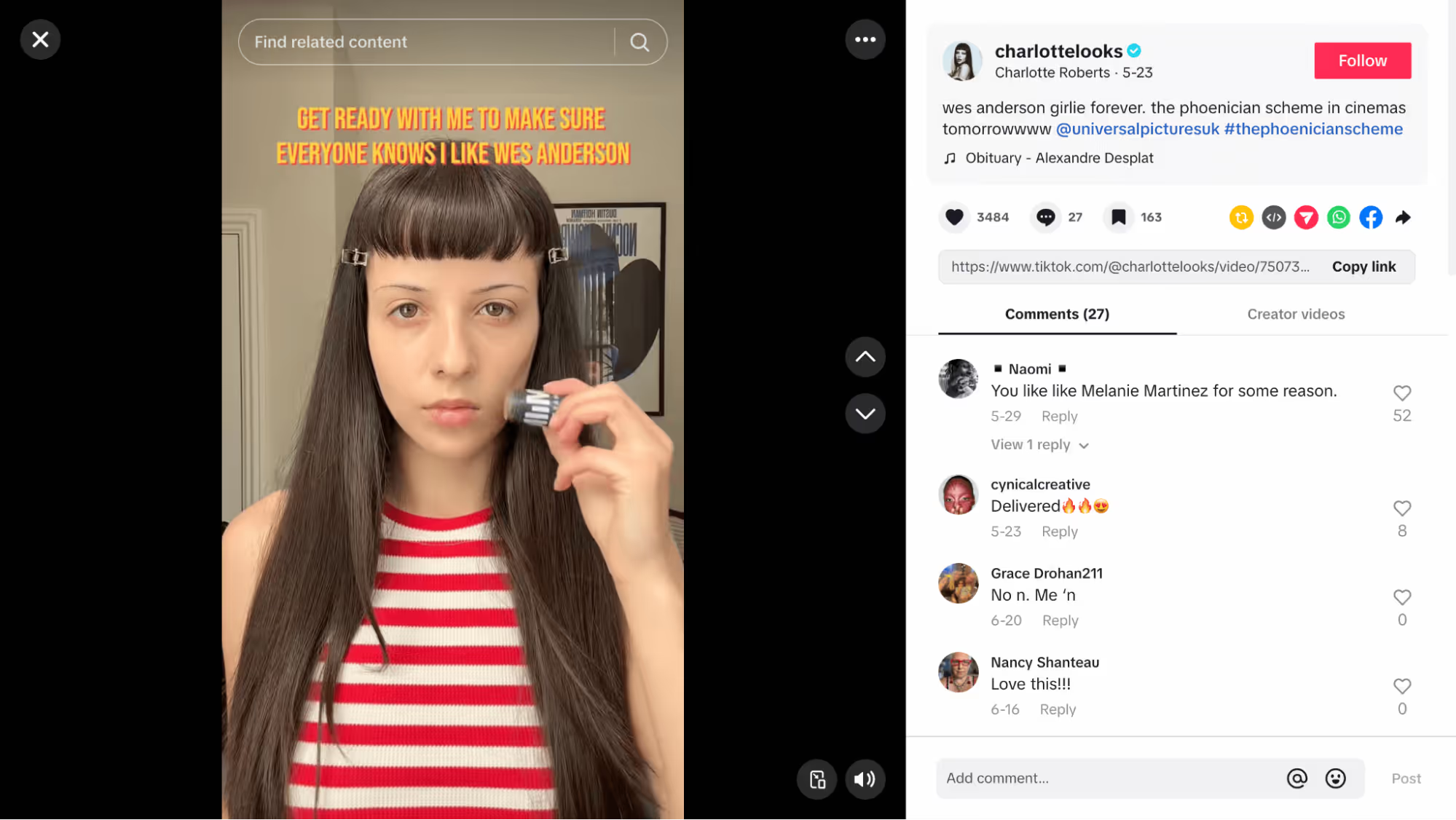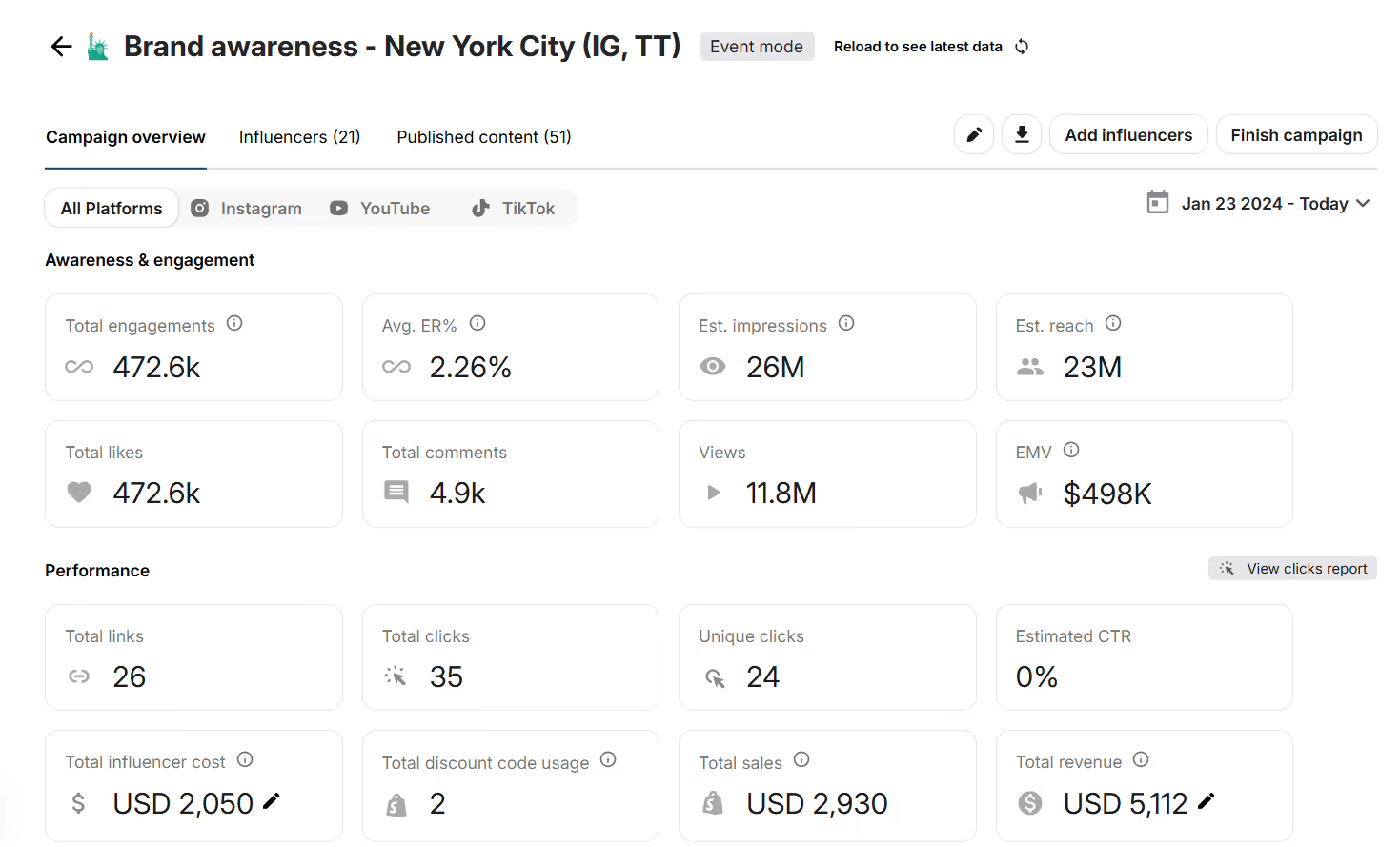You’ve worked hard to create an influencer marketing plan. Everything’s in place, and each collaboration is progressing as expected. But suddenly, a viral trend is having a moment on the internet.
Do you shift – jump on it and take advantage? Or do you stick – continue your strategy as planned?
There’s no one right answer, of course. It’s always safer to play by the book and follow your plan, especially when you’re on a tight budget. But sometimes, striking while the iron is hot has its benefits: increased visibility, exponential ROI, and a chance to create an unforgettable impression.
For this article, I asked pro marketers how they know when to derail a plan and when to stick to it. Read on for their approach to assessing an opportunity and taking a smart, calculated risk.
TL;DR? Here’s a quick table summarizing my findings.
The decision flowchart
Tempted to jump on the latest trend? Use this decision flowchart to quickly identify whether or not a trend is worth your time, effort, and money:

There’s more nuance that a flowchart can’t capture, though. First, I’ll tell you about situations when you should shift your efforts in favor of jumping on the trend. Then, we’ll look at scenarios in which it’s better to stick to your OG strategy.
Shift: When the timing is right
Call me a romantic, but I think some of the best influencer collaborations come from the perfect timing.
A jewelry brand collaborating with an influencer when she’s about to get married. A moving company partnering with a creator when they’re buying a house across the country. A travel insurance product promoted by an influencer when they got injured on a trip abroad. You get the gist – this is the magic of storyfit influencers. ✨
To give you an example of how storyfit influencers work in practice, check out this collaboration between Chaitali Verma and Nushucare. The influencer tested how the product held up during an international trip – a use case addressing a specific concern of the brand’s target audience.

The right timing doesn’t always coincide with trending content, but it can be just as impactful because your products fit in naturally with the influencer’s life.
These partnerships are easiest to pull off with long-term influencer partners because you’ve already developed a solid relationship with them. Via regular communication, both of you can identify moments where your product fits in naturally. And since the creator already knows your brand style, they can create content quickly, too.
Shift: When a trend perfectly fits your brand identity
If a trend is authentic to your brand and true to your values, consider participating in it.
For example, Charlotte Roberts promoted the movie The Phoenician Scheme for Universal Pictures UK in the Wes Anderson trend. It fits the bill perfectly – Charlotte nails the unique style, and it’s nicely integrated into Universal Pictures’ brand as a whole.

I can also see a fashion brand jumping on this trend – if the vibe matches – with something like “How I would dress in a Wes Anderson movie.” You could also participate in the trend if you sell polaroid cameras or other film-related products.
Do you see how, when a trend aligns with your brand and/or products perfectly, it’d be a missed opportunity not to jump on it?
The key is having a natural, seamless fit with the trend. If there’s no organic fit, it’s better to continue sticking to your original strategy.
If you’re unsure whether a trend fits your brand or not, consider asking your influencer partners (especially the ones you have long-term relationships with) if they think you both can pull it off.
Shift: When a coveted influencer becomes available or an existing partner blows up
If you run an always-on influencer program, and one of your influencer partners suddenly sees exponential growth (or even goes viral), then ride that wave! It’s an excellent idea to partner with them while they’re still seeing an upward momentum to shine some of their spotlight on your brand.
But don’t limit yourself to influencers already in your creator family: if you see someone with the right brand fit gaining traction, begin your outreach right away. Similarly, if you find a rare, open slot with an influencer on your wishlist, it’s worth grabbing it if you have the budget.
Just be prepared to move at warp speed in these scenarios to make the most of the virality.
Shift: When there’s a relevant local trend in a specific region
If you operate your influencer marketing strategy in multiple markets, you know that what takes off in one market can often fall flat in another.
Some trends might resonate with the local audience and put your brand on the map even if they haven’t gained traction anywhere else. Lucy Sergeeva suggests relying on local experts to find such trends:
Like with niche-specific trends, you could miss out on location-centric viral moments if you aren’t active in that market. But if you partner with an agency or freelancer from the local market, they can help you identify those opportunities and implement them flawlessly.
Shift: When missing out on a cultural moment can cost brand visibility
Sometimes, your absence from a trend can cost you more than staying in your lane. For example, if you were a wellness brand, you would not want to miss out on the great lock-in challenge.
Gymshark has a dedicated blog post about the trend, along with “lock-in uniforms” and brand ambassadors speaking about the viral moment.

Many of these trends will live in subcommunities and small corners of the internet. The average Joe might not know about the great lock-in challenge, but someone whose feed is filled with self-improvement and productivity will definitely stumble on it.
It’s crucial to stay on top of these mini trends in your ICP’s feed so you can make the most of them when the chance arises. Capitalizing on these trends often has a high impact because of their relevance to your brand. Lee Drysdale agrees:
In such niche trends, the advantages to switching gears usually outweigh the disruption to your regular programming. That said, honoring your brand’s values and vibe is paramount. If you feel a trend – even a culturally relevant one – does not align with your messaging, then stick to your original plan.
Stick: When you’re strapped for resources
Participating in trends looks easy on the surface, but it can be a lot of work. For starters, you have to stay “in the know” about global social media trends along with local and niche-specific trends.
Yes, you might come across trends without any effort in your regular scrolling, but most will require you to do some research before you can jump on them. For example, you need to know how to recreate the trend perfectly with the same audio, camera angles, and vibe – all before adding an influencer into the mix.
If you’re a small team with a tight budget and even tighter management resources, it’s not worth spending too much time finding, analyzing, and jumping on trends. In this situation, chasing trends will be more costly than beneficial.
Instead, it’s better to invest your time, money, and effort into evergreen influencer content you can repurpose.
Stick: When trends are simply not in your company philosophy
If your brand’s core philosophy is originality over external hype, then trends are rarely going to suit your influencer marketing strategy.
Maybe your company is known for never-before-seen campaign ideas, or creating stellar educational content. Participating in trends will dilute your hard-earned brand image for the sake of comedic effect and a little boost in visibility. The short-term hype will cost your brand long-term value.
There’s nothing wrong with experimenting occasionally and seeing how trends pan out for you. But if you’ve been an original from the beginning, then stick to your guns and refuse to abide by the trends – you’ll preserve your brand image.
Stick: When the trend will only dilute your core messaging
If a trend doesn’t align with your brand’s values, products, or niche, it doesn’t make sense to take part in it. Kat LaFata explains with an example:
Don’t jump on a trend simply because it’s going viral – participating in a trend that’s inauthentic to your brand can backfire. Instead of helping with added visibility, it’ll confuse and alienate your audience.
Ask yourself if you can add anything meaningful to the conversation or if you’re just chasing virality. If it’s the latter, focus on long-term value instead of fleeting, short-term gains.
Besides, there will always be another social media trend – and sooner or later, one is bound to fit your brand perfectly.
Stick: When the trend will overshadow your product
If the trend’s humor or format is such that your product stays in focus for a minuscule second, it’s likely not worth it. Such trends are better suited to entertainment than marketing.
When using trends, the goal is to make your brand more memorable and visible. But if the meme itself is the primary focus, your brand will get lost in the noise – even if you go viral. In this situation, better to stick to the original strategy than to get empty engagement.
Stick: When the trend holds a reputational risk
Many social media trends go viral because they’re controversial. While they can boost your visibility, the cost will outweigh the benefits because of the inherent nature of such trends. If you see people having mixed sentiments about a trend, it’s best to steer clear of it rather than put your reputation at risk.
This is especially true when you’re entering a new market. Cultural misalignments can cause your trend to be received poorly because of the difference in location or perception. Run your trending content by a local expert or a trusted local influencer partner before posting it.
Sometimes, the best laid plans must go astray…
Understanding which trends are worth derailing your plans and which are just shiny objects is an art and a science. Sometimes, it’s clear as day that a trend is made for your brand. Other times, it’s a little risky, but you want to trust your gut.
The best way to maximize your success in trend-driven campaigns is to:
1. Bake them into your influencer marketing plan.
Set aside 10–15% of your budget to test misfit creators, participate in trends, and experiment with messaging. This will reduce the risk of derailing your plan because you’ve accounted for the spontaneity.
2. Track the ROI of your trending campaigns.
Using influencer marketing tools like Modash, you can create a separate category of campaigns just for testing trends. Over time, you’ll see which trends work for you and which don’t. You can also use the data here to report on your performance and reflect on your campaigns.

3. Keep a handful of trusted creators you can activate fast.
Speed is of the essence if you want to hop on any trend. If you have a roster of creators who are readily available to create brand-fit content, you can make the most of the trend before it fades away.
In the end, remember, trends are on the periphery of your strategy, not in the center. It’s more important to ace the big stuff (having trusted influencers, solid relationships, and airtight systems) before committing resources to participate in trends.
Want more insights into the art of strategic decision-making? Sign up for our free newsletter to get expert advice from influencer marketers sent straight to your inbox.









.avif)
